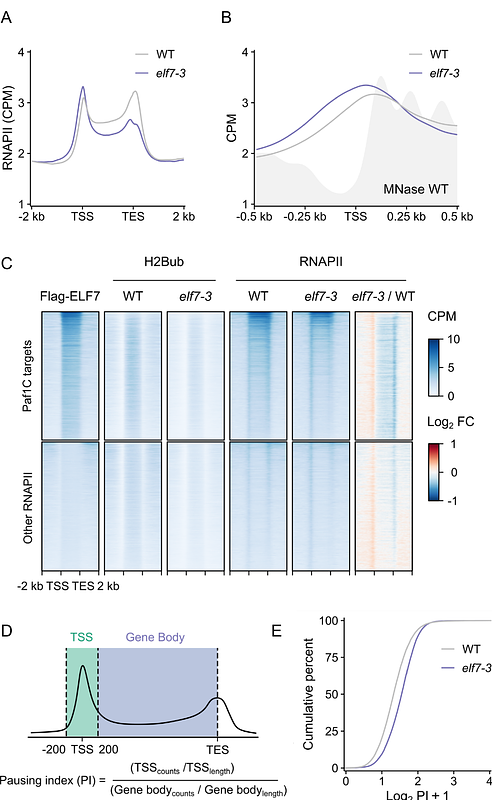Genome-wide evidence of the role of Paf1C in transcription elongation and histone H2B monoubiquitination in Arabidopsis

Genome-wide evidence of the role of Paf1C in transcription elongation and histone H2B monoubiquitination in Arabidopsis
Blanco, N.; Perez-Alemany, J.; Bourbousse, C.; latrasse, D.; Ait-Mohamed, O.; Benhamed, M.; Barneche, F.; Blazquez, M. A.; Gallego-Bartolome, J.; Alabadi, D.
AbstractThe evolutionarily conserved Paf1 complex (Paf1C) participates in transcription, and research in animals and fungi suggests that it facilitates RNAPII progression through chromatin remodeling. To obtain evidence that Paf1C acts in transcription elongation in Arabidopsis, we examined the genomic distribution of the ELF7 and VIP3 subunits of Paf1C. The occupancy of both subunits was confined to thousands of gene bodies and positively correlated with RNAPII occupancy and the level of gene expression, supporting a role as a transcription elongation factor. We found that monoubiquitinated histone H2B, which marks most transcribed genes, was strongly reduced genome-wide in elf7 seedlings. Genome-wide profiling of RNAPII revealed that in elf7 mutants, RNAPII occupancy was reduced throughout the gene body and at the transcription end site of Paf1C-targeted genes, suggesting a direct role for the complex in transcription elongation. Overall, our observations suggest that there is a direct functional link between Paf1C activity, mono-ubiquitination of histone H2B, and the transition of RNPII to productive elongation. However, for several genes, Paf1C may also act independently of H2Bub deposition or occupy these genes more stably than H2Bub marking, possibly reflecting the dynamic nature of Paf1C association and H2Bub turnover during transcription.